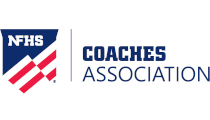Essential Hoop Truths for Basketball Players
By Blake Gardner on July 16, 2014 basketball article PrintAt the end of the season, a coach often looks back in order to look ahead. Often that assessment involves setting up a framework for things that all kids can improve upon. The following universal “hoop truths” may be helpful as basketball coaches plan for the season ahead.
1. GET YOUR BUTT DOWN – The biggest mistake that high school athletes make is that they play too straight up. It may be a combination of being cool and being out of shape. If you ever watch good college teams, pay special attention to how low and quick their players are. It is phenomenal. They are always “sitting in the chair.” It is called an athletic stance and it is not unique to basketball. Watch a middle linebacker in football, a shortstop in baseball, a tennis player awaiting a serve or a good basketball player and you will see this “stance.” Conditioning is also an important part of being in a stance. Once you get tired you stand up. The better conditioned that players are, the better prepared they are to stay in a stance for an extended period of time (like a 35-second shot clock).
2. DRIBBLE WITH YOUR HEAD UP – This involves players learning how to dribble with the head up: left and right hand. See the floor. Look at the front of the rim while dribbling. If you do that then you can see everything in front of you. Work to improve ball-handling so you can see the rim whether you are wide open, closely guarded or double-teamed. No more elementary-level plays (inbound the ball on the left side of the court and dribble to the right-hand corner and pick up the dribble because you can’t go right anymore).
3. GO FOR THE WIN, AGAIN AND AGAIN – How many times have you won the championship game (in your imagination)? Hopefully, kids still countdown “5, 4, 3, 2, 1” and make the game-winner in their driveway or backyard. Great players don’t just show up on game night and score 30 points. They don’t just get lucky and make the basket that wins the game. They do those things because they have done them hundreds of times on their own – in an empty gym, or in a backyard, or in the park, or in the driveway. Remember, if you miss the game-winner it was because you got fouled, so go to the free- throw line and win that imaginary championship.
4. FAKE A PASS, MAKE A PASS – People like to say that the mid-range jumper is the lost art, but perhaps passing is the lost art. Too many times, kids stare down a target, wait some more and then throw the ball right to a defender. Fake a pass, make a pass. If that doesn’t work, then pivot, protect the ball and, for Heaven’s sake, do not panic. Certainly, passing is a two-person skill. You can have the greatest passer in the world and be unsuccessful if you have “Stone Hands McGhee” catching the ball. Likewise, there are some pretty good professional receivers who struggle because they don’t have anyone to get them the ball. A good passer with court awareness and timing is invaluable in high school basketball. Great all-around players never get enough credit for setting up their teammates. Look to score to set up your pass, draw the double-team and dish.
5. NO SUBSTITUTE FOR HUSTLE – This one is an intangible that can’t really be improved upon during the off-season, but it is something that everyone can control. Obviously you can have bad nights offensively, but you should never have a bad night on defense because it is based on effort. It will get you through the hard times and it will find you a spot on the court. Basketball favors long athletic players, but hustle can overcome skill and athletic ability.
6. BE A STUDENT OF THE GAME – Watch basketball on TV. Go to games. Pick out things that you like and also things you don’t like. Have heroes and role models. Study the game and find moves that suit your style of play, and practice them over and over again.
7. MY PET PEEVE- ONE DRIBBLE AND DEAD – Is there a more wasted move in basketball? Dribble with a purpose, don’t just dribble to dribble. For starters, catch the ball in triple threat. See the rim first, then progress to the post, then “action” time for dribble or pass. Only dribble for four reasons: bring the ball up the court, avoid a five-second count, improve a passing lane or score a basket. In today’s dibble-drive laden game of basketball, those rules don’t necessarily apply anymore, but please do not take one dribble and pick the ball up.
8. BE A GYM RAT – The greatest compliment I can give a player is that he is a gym rat. If you have achieved gym rat status, then you deserve to be a player. And don’t trick yourself into thinking that because you are in the gym for an hour a day, four days a week that you are a gym rat. Work on your game while you are in the gym. That means two-ball dribbling, Pete Maravich ball handling, shooting on your own, conditioning, form shooting, etc. Call it “sweat equity” – it is your investment and if you invest correctly you will be reap the benefits at a later date (the season).
9. PURSUE THE BALL – Rebounding is a passion, a desire, a “want to” mentality. Some of the great rebounders in NBA history were not necessarily the tallest or greatest athletes; e.g., Dennis Rodman and Charles Barkley. Rebounding is about getting into position. While your opponent is ball watching, you need to crash the boards. Understand that the majority of the rebounds will go to the weak side. Are the rims hard (long rebounds) or do they rattle (short rebounds)? Is it a long 3, or is it a flat shot? There are a lot of factors that go into a rebound. Offensive rebounding is about running to the rim. Defensive rebounding is about being in a good defensive position, finding your defender and then getting the ball. Michigan State head coach Tom Izzo calls this “thump, bump, rump.” You need to find your defender, then the ball and then pursue it. On a side note, rebound on free throws. There is not a more demoralizing thing in basketball than giving up an offensive rebound on a free throw. The game has already favored you by giving you inside position. All you have to do is box out and get the ball.
10. STEER THE BALL – As an “on ball” defender you need to dictate what the offense does. As the ball crosses half court, steer the ball-handler to his weak hand; most of the time this is his left hand. By doing this you have moved the ball out of the middle of the court, thus taking away half of the offensive options. You have also helped your team defense by declaring a ball side and a help side. If the ball is passed to a wing, you will want to steer the ball whatever direction your coach teaches you. We push everything to the baseline, but I know some coaches who push left regardless of orientation on the court.
11. LISTEN TO YOUR COACH – Coaches are talking to you in the huddle or on the sideline because they see something that will help you improve or help your team be victorious. You need to make eye contact. During time-outs, only one person should be talking and it is not a player. Remember that basketball is not debate class. If the coach wants your input, then they will ask for it. Give no excuses on why you reached in on defense or why you didn’t run the play right. Just listen to your coach and agree to do better next time. Remember, you are only as good as your next play. Don’t compound a mistake because you are pouting or your feelings are hurt. Focus on your “Next Best Action.” The old saying is that coaches are talking to you because they care about you. When they quit talking to you is when you are in trouble. So when you get pulled out of a game, don’t shrug your shoulders or roll your eyes. Have your head up and address your coach.
12. KNOW YOUR OPERATING AREAS – Identify areas on the court that suit you basketball moves. This is the offensive answer to No. 10. If your team runs a sideline triangle, get comfortable shooting, dribbling and passing from those spots. Avoid corners at all cost. If you do get trapped, then you need to drag dribble (two hard dribbles backwards out of the trap), split the trap, throw it off the trapper’s leg or call time-out. Getting trapped will make your coach’s blood pressure rise. Do not take a 5 count and do not aimlessly throw the ball for a turnover.
13. LIVE THE CLICHÉS – “Play Hard, Play Smart, Play Together”
“Remember it’s not who you play, it is HOW you play”
“You must act like a champion everyday, if you wish to be a champion someday”
“Team above self”
“Discipline yourself and others won’t have to”
About the Author: Blake Gardner is the head boys basketball coach at Hill City High School in Hill City, South Dakota.
Blake Gardner
Blake Gardner is the head boys basketball coach at Hill City High School in Hill City, South Dakota.
Most Recent Articles
- nfhs news NFHS Learning Center Delivers 25 Millionth Course
- Track & Field/Cross Country article Effective Communication with Athletes and Coaches
- nfhs news Player Equipment Changes Highlight 2025 High School Football Rules Revisions
- Player Equipment Changes Highlight 2025 High School Football Rules Revisions
- nfhs news Judgment Call on Second Contact Eliminated in High School Volleyball






